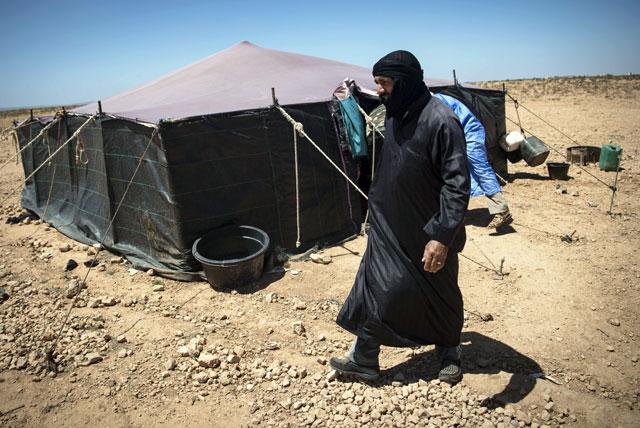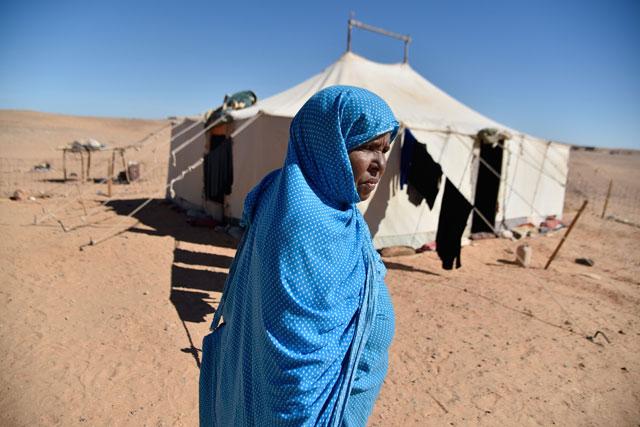You are here
Camel herding in Western Sahara a passion with pedigree
By AFP - Nov 21,2019 - Last updated at Nov 21,2019
DAKHLA, Western Sahara — In the Oued Eddahab desert in Western Sahara, Habiboullah Dlimi raises dairy and racing camels just like his ancestors used to — but with a little help from modern technology.
His animals roam free in the desert and are milked as camels always have been, by hand, at dawn and dusk.
When camels “feed on wild plants and walk all day, the milk is much better”, said the 59-year-old herder, rhapsodising about the benefits of the nutrient-rich drink, known as the “source of life” for nomads.
But Dlimi no longer lives with his flock.
He lives in town with his family. His camels are watched over by hired herders and Dlimi follows GPS coordinates across the desert in a 4X4 vehicle to reach them.
He is reticent when asked about the size of his herd. “That would bring bad luck,” he said.
He prefers to speak of the gentleness and friendliness of the animals he knows like his own children.
“Camels can endure everything: Sun, wind, sand and lack of water, and if they could talk, you’d easily hear how intelligent they are,” he said.
Dlimi comes from a long line of desert dwellers from the Ouled Dlimi tribe.
As tradition dictates, he lists his ancestors going back five generations when introducing himself.
“I know the desert and the desert knows me,” he said.
Like elsewhere, the nomads of Western Sahara are settling, following a shift from rural to urban living.
“Young people prefer to stay in town,” Dlimi said, and herders now mostly come from neighbouring Mauritania, whose desert north is traversed by caravans of up to a thousand camels.
Even they “often demand to work in areas covered by [mobile phone] network signal”, he added.
The population of the nearby town of Dakhla has tripled to 100,000 in 20 years, with growth driven by fishing, tourism and greenhouse farming encouraged by Morocco.
In this part of Western Sahara, development projects depend entirely on Rabat.
Tribal affiliation trumps politics, though.
“Tribes are tribes, it’s a social organisation,” he said. “There are very strong links between us.”
To “preserve the past for the future”, Dlimi started a cultural association to conserve traditions from a time when there were no borders and “families followed the herds and the clouds”.
While Dlimi loves the desert, he does have one complaint: “The camel dairy industry is valued everywhere in the world except here.”
Camel milk is trendy with health-conscious consumers and the lean meat is excellent, Dlimi claims.
Today though, it is small livestock farming that is the main agricultural focus, in response to what non-nomadic Moroccans tend to eat.
The 266,000 sq.km. of Western Sahara under Moroccan control hosts some 6,000 herders, 105,000 camels and 560,000 sheep and goats, according to figures from Rabat.
In other arid countries, including Saudi Arabia, intensive farming of camels has taken off.
But, while Moroccan authorities have undertaken several studies into developing Western Sahara’s camel industry, these have not so far been acted upon.
Related Articles
TIZNIT, Morocco — "We refuse to be confined to a cage," declares nomadic herder Mouloud, asserting the rights and customs of his
BOUJDOUR CAMP, Algeria — Selembouha Dadi can only imagine the homeland she dreams of but has never seen, agonisingly out of reach beyond the
M’HAMID EL GHIZLANE, Morocco — In a Moroccan oasis town on the edge of the Sahara, nomads in turbans and tunics are thwacking a camel-wool b



















